Load the indicated paper in the paper cassette
Load the correct size paper in the cassette following the procedure below.
1. Pull out the paper cassette.
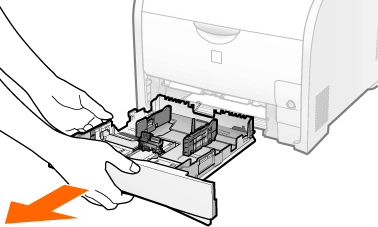
 Caution:
Caution:
Be sure to remove the paper cassette.
If paper is loaded while the paper cassette is partially pulled out, the paper cassette may drop or the printer may become damaged resulting in personal injury.
2. Slide the paper guides to the position of the size of the paper to be loaded.
Slide the side paper guides.
- Hold the lock release lever.
- Slide the paper guides to the position of the size of the paper to be loaded.
- Align the position of (A) with the size mark of the paper to be loaded.
- The side paper guides move together
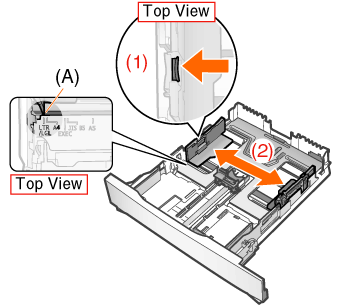
Slide the paper guide at the front center.
- Hold the lock release lever.
- Slide the paper guides to the position of the size of the paper to be loaded.
- Align the position of (A) with the size mark of the paper to be loaded.
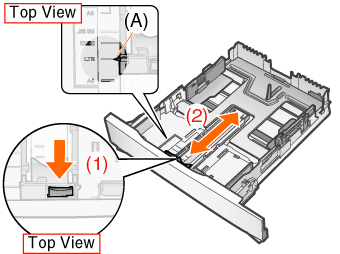
Pull out the paper cassette before loading Legal size paper.
- Hold the lock release lever at the front right.
- Adjust the length of the paper cassette.

Note:
Size abbreviation on the paper guides.
|
Paper Size
|
Paper Guides
|
|
Legal
|
LGL
|
|
Letter
|
LTR
|
|
Executive
|
EXEC
|
|
B5
|
JIS B5
|
3. When loading labels or coated paper, fan them a few sheets at a time, and then align the edges.
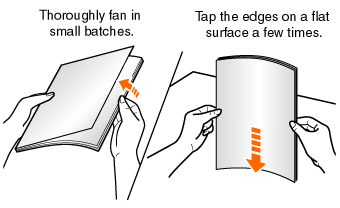
 Caution:
Caution:
Be careful when handling paper.
Handle paper carefully not to cut your hands with the edges of the paper.
 Important
Important
Be careful when handling labels or coated paper.
- If you are using labels or coated paper, fan them thoroughly and load them again. If they are not fanned enough, multiple sheets of paper may be fed at once, causing paper jams.
- When fanning or aligning coated paper, try to hold the edges to avoid touching the printing surface.
- Take care not to mark or stain the printing surface of coated paper with fingerprints, dust, or oil. This may result in poor print quality.
4. Load the paper so that the edges of the stacked paper are aligned with the front side of the paper cassette.
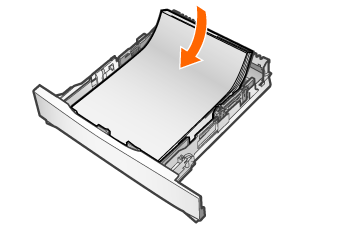
 Caution:
Caution:
Be careful when handling paper.
Handle paper carefully not to cut your hands with the edges of the paper.
 Important
Important
Be sure to load paper in portrait orientation.
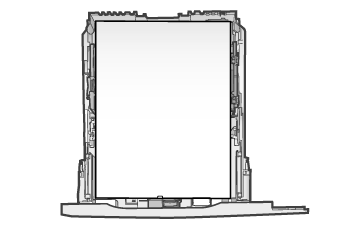
Be sure to check the position of the paper guides.
If the paper guide is set at a wrong position, this may result in misfeeds.
Paper cassette capacity.
|
Paper Type
|
Paper Capacity
|
| Plain paper (Ex. 20.0 lb Bond (80 g/m2)) |
Approx. 250 sheets
|
| Heavy paper (Ex. 24.0 lb Bond (91 g/m2)) |
Approx. 200 sheets
|
| Heavy paper (Ex. 50.0 lb Cover (128 g/m2)) |
Approx. 150 sheets
|
| Label |
Approx. 50 sheets
|
| Coated paper |
Approx. 50 sheets
|
When using paper that has been poorly cut.
If you use paper that has been poorly cut, multiple sheets of paper may be fed at once. In this case, fan the paper thoroughly, and then align the edges of the stack properly on a hard, flat surface.
5. Hold down the paper, then set it under the hooks (A) on the paper guides.
Make sure that the paper stack does not exceed the load limit mark lines (B).
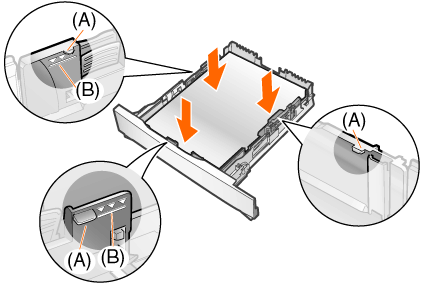
 Important
Important
Do not load the paper stack which exceeds the load limit mark lines.
Be sure that the paper stack does not exceed the load limit mark lines. If the paper stack exceeds the load limit mark lines, this may result in misfeeds.
Note:
When loading Legal size paper.
Set the legal dust cover on the paper cassette.
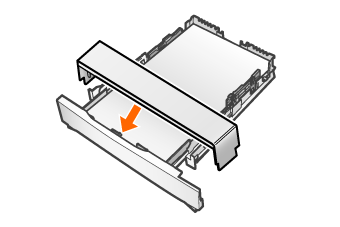
6. Insert the paper cassette into the printer.
Push it into the printer firmly.
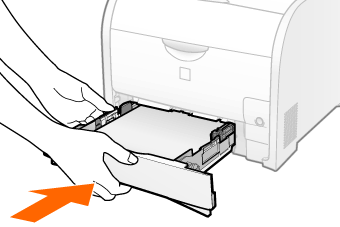
 Caution
Caution
Precautions when inserting the paper cassette.
Be careful not to catch your fingers.
Note:
When loading Legal size paper.
Although the front side of the paper cassette is not flush with the front surface of the printer as shown in the following figure, the printer is ready.
